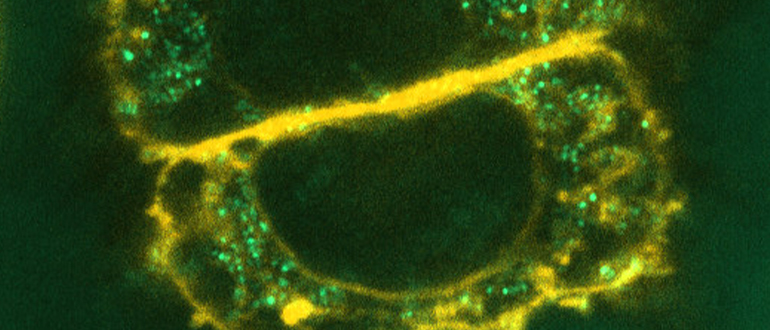
Nano test to ensure safety of future cosmetics and foods
Nanoparticles make their way into a broad range of products and help to optimise everyday life, but the tiny particles can also end up taking their toll on our health. The nanotechnology centres at the Mads Clausen Institute, NanoSYD in Sonderborg and Nanooptics in Odense, now received funding for a project that will test products for possible harmful particles.
They are everywhere, but you cannot see them. We’re talking about nanoparticles. In the course of more and more nanotechnological products appearing on the market, our need for knowledge increases about how these new nanomaterials are dangerous for our health and environment.
As soon as temperatures reach 26 degrees outside, we cover ourselves in suntan lotion to protect ourselves against the sunbeams, probably without giving it a thought that the products we use can contain nanoparticles made of precious metals. And this is perfectly OK, because a research team from Yale University in the US concluded that certain sunscreens based on nanotechnology are both safer and more effective than traditional ones.
Nanoparticles are everywhere, and nano is eventually just a Greek term describing their size and means dwarf. The technology had its breakthrough in the 1980s, when researchers seriously began to understand how they could control and use particles with very small sizes within sciences ranging from physics to biology to medicine.
Can be harmful to health
Meanwhile it has shown that nanoparticles in cosmetics and medicine can be harmful down to cell level. The particles can cause cancer, arteriosclerosis and cardiovascular diseases. Nanoparticles are so tiny that they can penetrate our skin and get into our organs. An INTERREG 4A network project led by SDU NanoSYD in 2014 has proven that very small nanoparticles penetrate the cell membranes and trigger toxic reactions.
- It can be very helpful to use nanoparticles for triggering antimicrobial effects on surfaces, but we need to be extra careful how we fabricate these nanoparticles. Silver nanoparticles with a size above 100 nm are almost harmless, whereas nanoparticles below 20 nm are very hazardous, says researcher Jacek Fiutowski from the centre NanoSYD at SDU in Sonderborg.
Together with other researchers at SDU and Nanooptics, Jacek Fiutowski is going to develop a method to identify very small and hence very harmful nanoparticles in cosmetics and foods. The new Interreg 5A project CheckNano that aims at developing a chip prototype for the fast registration of hazardous nanoparticles has just received around 8 million Danish kroner funding from Interreg Deutschland-Danmark with means from the European Regional Development Fund.
Extremely important project
Head of NanoSYD and the Mads Clausen Institute, Horst-Günter Rubahn, is happy and proud of the large grant.
- We always strive to conduct research that is of benefit for the surrounding world, and we can certainly say that this holds true for this project. There is an immense need for technological progress which can generate safe methods to evaluate the danger of nanoparticles for humans and the environment.
Horst-Günter Rubahn adds that he also is very happy about the fact that Interreg is supporting CheckNano, which is an offshoot from a previous project about nanotoxicology.
EU wants to be in control of nano products
The potential hazardousness of nanoparticles is frightening. That’s why EU pushes hard to mark products containing nanoparticles and at the same time to develop tests and certificates that can protect consumers against potentially harmful substances. It is, however, very difficult and time consuming to check if nanoparticles in products are hazardous, but this is what CheckNano is going to redress.
NanoSYD has the specific tools (as, e.g., a Helium Ion microscope and a cleanroom) and the necessary knowledge that can form the basis for a platform based on a number of sensors which quickly can determine toxic nanoparticles in cosmetics or food products. As a project partner, the company PAJ in Sonderborg will complete the entire sensor product. On the German side, NanoSYD has project partners who are specialists within different disciplines such as toxicology at Flensburg University of Applied Sciences and laser techniques at the company Coherent in Lubeck.
The project CheckNano runs for three years, and although the grant becomes effective not until autumn, the researchers at NanoSYD can already start their work now, because they also received funding from Fabrikant Mads Clausens Fond that donated 92,400 kroner for the purchase of necessary technical equipment.